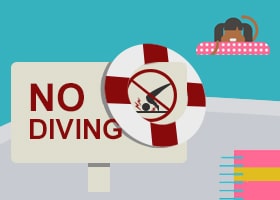 As the Affordable Care Act continues its full rollout heading into 2014, the need for nurses is growing exponentially. That need, along with public awareness of the wealth of job opportunities available upon graduation, has led so many people to enter registered nursing programs across the country that some colleges and universities are being forced to turn away qualified applicants because they don’t have room in their programs.
As the Affordable Care Act continues its full rollout heading into 2014, the need for nurses is growing exponentially. That need, along with public awareness of the wealth of job opportunities available upon graduation, has led so many people to enter registered nursing programs across the country that some colleges and universities are being forced to turn away qualified applicants because they don’t have room in their programs.
Nursing bucks the unemployment trend
Even as unemployment in the United States stubbornly remains above 7 percent, graduating nurses are having little trouble finding work. In fact, the Bureau of Labor Statistics predicts a 26 percent increase in nursing jobs by 2020, compared to 14 percent growth in overall employment.1 “We are graduating 240 undergraduates, baccalaureate-prepared nurses and around 50 to 75 with advanced practice degrees this year, and they all have jobs,” Jeannette Andrews, dean of the College of Nursing at the University of South Carolina, told NBC News.2 And that wave doesn’t appear ready to ebb anytime soon. Nationwide, 27 million Americans are expected to gain access to primary care by 2017, and people throughout the health care industry are concerned there won’t be enough nurses to handle the volume, especially as hospitals and doctors come to rely on them more and more to provide a wide range or care.
Qualified applicants looking for other avenues to pursue their nursing dream
According to the American Association of Colleges of Nursing, U.S. nursing schools turned away more than 75,000 qualified applicants in 2011 because they didn’t have enough staff, funding or classroom space to be able to accommodate all of them.3 While that is discouraging news in many ways, it has also opened up alternate routes for people who want to get into nursing or medical assistant programs. Online schools have stepped in to fill the void, offering associate’s degrees in a variety of healthcare fields that can prepare students to take advantage of the many job opportunities available in the industry. By all indications, the need for nursing and medical assisting will grow steadily in the coming years, and the opportunities to build a career in the field should continue apace. For those who are interested in joining the healthcare industry, traditional four-year colleges and universities provide one route. But if the growing strain on the traditional system has left you searching for other opportunities, there are lots of smaller specialty programs available throughout the United States. 1 Bureau of Labor Statistics, “Occupational Outlook: Registered Nurses,” March 29, 2012. http://www.bls.gov/ooh/Healthcare/Registered-nurses.htm 2 Fox, Maggie, “‘Double Whammy: Nursing shortage starts in the classroom,” Aug. 31, 2013. http://www.nbcnews.com/health/double-whammy-nursing-shortage-starts-classroom-8C10990502 3 American Association of Colleges and Nursing, “Nursing Faculty Shortage Fact Sheet,” Oct. 24, 2012. http://www.aacn.nche.edu/media-relations/FacultyShortageFS.pdf



